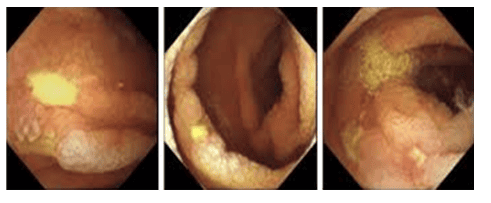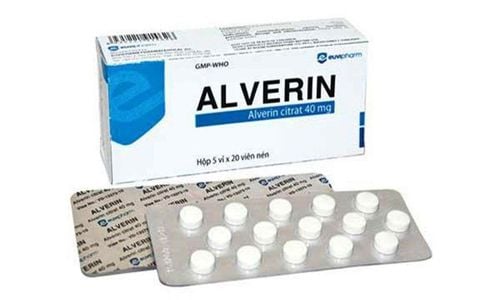This is an automatically translated article.
Posted by Master, Doctor Mai Vien Phuong - Department of Examination & Internal Medicine - Vinmec Central Park International General Hospital
Celiac disease (Celiac disease) has been considered uncommon in Asia for a long time. However, some studies suggest that, in the Indian subcontinent and the Middle East, Celiac disease is present and common as in Western countries. Outside of these Asian regions, information on the epidemiology of celiac disease is still lacking or largely incomplete for various and variable reasons. Here, the authors discussed the epidemiological aspects and diagnostic barriers in several Asian regions including China, Japan, Southeast Asia, and Russia/Central Asia.
In some of those regions, especially Russia and Central Asia, the prevalence of Celiac disease is most likely underestimated. A number of factors, to varying degrees, may contribute to underdiagnosis of celiac disease (and thus, an underestimation of its epidemiological burden), including poor awareness of the disease among physicians. and/or patients, limited access to diagnostic resources, inappropriate use or interpretation of serological tests, lack of standardized diagnostic and endoscopic procedures, and insufficient expertise in histopathological interpretation.
1. The Situation of Celiac Disease in Japan
In Japan, the epidemiological burden of Celiac disease is very low. In 2018, Fukunaga et al. described only two biopsy-based diagnoses of Celiac disease in a cohort of 2,055 people including 2,008 asymptomatic and 47 adults complaining of chronic abdominal symptoms, respectively. with prevalence <0.1%. That finding is consistent with the very low frequency of HLA-DQ2/DQ8 immunostaining. Indeed, in a study including 371 unrelated healthy blood donors, the frequency of the HLA-DQB1*02 allele was reported to be <1% despite the relatively common DQB1*03:02 allele (10.8 %). Although dietary gluten exposure is increasing in Japan, wheat consumption remains relatively low (estimated at only one-third of consumption in Western countries). The same study group reported a serosensitivity rate for Celiac disease (based on anti-tissue immunoglobulin (tTG) (Ig) A) antibodies of 0.19% in 2,005 Japanese adults tested in year 2008-2013. That result is consistent with another study that reported a positivity rate of 0.2% (based on a cut-off titre of 10 U/mL) in 2014-2016.
Celiac disease is rarely considered by physicians managing patients with chronic abdominal syndrome
Because of its presumed low prevalence, in Japanese clinical practice, Celiac disease may rarely be considered by physicians Management of patients with chronic abdominal syndrome review. It must be emphasized that the available studies have mostly, if not entirely, focused on healthy/asymptomatic individuals. Therefore, the actual Celiac disease diagnosis and serosensitivity rates may be higher than those reported to date.
However, Hokari and Higashiyama observed that Japanese physicians were unlikely to ignore Celiac disease, since endoscopic evaluation was well established in Japan for patients complaining of chronic symptoms in belly. This procedure is performed by well-trained endoscopists and the histopathological appearance of mucosal Celiac disease is well known. Therefore, the low epidemiological burden of Celiac disease in Japan is considered real: it is consistent with the immunological background and dietary habits, and there are no major diagnostic barriers. However, this situation could change in the near future if wheat consumption increases.

2. The Situation of Celiac Disease in Southeast Asia
Few clinical studies have evaluated the epidemiological burden of celiac disease in this Asian region. In most Southeast Asian countries, the allele frequency of HLA-DQB1*02 is estimated to be <10%-15%. A low-gluten diet also contributes to low rates of Celiac disease. In Vietnam, the autoimmune status of Celiac disease was evaluated in 1,961 children and approximately 1% were found to be positive for anti-tTG IgA antibodies.
In Thailand, serologic testing for Celiac disease in 46 children with type 1 diabetes and only one was positive for anti-tTG IgA antibodies. Considering the expected prevalence of >5% (and up to 10%) in such a risk group, the prevalence of celiac disease is assumed to be low in Thai children and in the general population.
In Malaysia, Yap et al reported a relatively high seroprevalence of Celiac disease of 1.25% in healthy young adults. This finding could be explained by the fact that the Malaysian population consisted of three major ethnicities (i.e. Malay, Chinese and Indian), but HLA genotyping was not performed in that study. These authors note that Celiac disease is underdiagnosed in Malaysia and discuss diagnostic barriers in the country. Lack of medical awareness about Celiac disease (resulting in low rates of Celiac disease serological testing), less sensitive use of Celiac disease serologic markers, inappropriate use of endoscopic procedures, and less recognition of histopathological specimens of mild Celiac disease, both considered as contributing factors.
Please dial HOTLINE for more information or register for an appointment HERE. Download MyVinmec app to make appointments faster and to manage your bookings easily.














